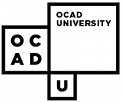Despite not knowing what the future holds for Web access, you can apply some basic principles that will make it more likely that your pages will be usable by any device.
World Wide Web inventor and current World Wide Web Consortium (W3C) director, Tim Berners-Lee, coined the term "evolvability" to describe the approach we need to adopt to move the Web successfully into the future, and ensure maximum usability. Evolvability, he says, is the ability to evolve easily, to harmonize technology and human organization. Another term, "futureproofing," refers to developing Web resources beyond pages that cater only to mainstream browsers on conventional desktop systems. Instead, Web authors need to assume that their designs will become part of a larger information infrastructure.
Several principles for futureproofing sites also happen to make sites more accessible to the growing number of Web users with disabilities. In fact, the University of Wisconsin's Trace Research and Development Center Refers to this process as "universal design" because the principles will make your pages usable by people in a noisy shopping mall who cannot hear a kiosk, people who are driving their car who must operate their radio or phone without looking at it, people who left their glasses in their room, people who are getting older, people with disabilities, and anybody.
Those principles include tagging a site according to its structure, rather than according to how the designer intends to have it appear on screen, and separating a document's content from its structure.
Tag by Structure, not by Looks
HTML is designed so that structural tags, such as <P>, <STRONG>, <H1>, and <BLOCKQUOTE> give information about a page's logical organization. So, a heading tag represents not simply something larger and in boldface, but a separate section of a given level in the document, a blockquote refers to a quote, and not merely an indented paragraph. The structure could be represented visually, as in the example of large size, bold font to indicate a Level 1 heading, but it also could be interpreted using pitch or volume if a smart phone were to interpret the same information. In addition, using a tag for something other than its purpose, such as using a <BLOCKQUOTE> tag for indentation could be confusing to users who are accessing the page using an audio device such as a smart phone or text-to-speech software.
This allows Web site visitors to review information using new technologies. Visitors can access the data and its structure using a traditional Web browser, a palmtop computer, or a telephone audio browser. Making the site evolvable into this broader information infrastructure particularly benefits Web users with disabilities who may depend on hands-free or eyes-free access using specialized software, such as a screen reader or voice-activated browser. So, forward-thinking designers will use structural elements in HTML to organize the information, and not to achieve visual effects.
Separating Content from Presentation
Another good way to make your Web site evolvable is to separate the content from the presentation. That way, different devices can interpret the structural elements as is most appropriate, but the content will be equally accessible no matter which device is being used to read it. In addition, it gives designers the freedom to adjust the appearance of the page while still using the tags for their designed purpose, making them readable to devices other than a PC with a monitor. By separating pretty visual effects from structural organization, you can simplify and clean up the HTML in your documents and make them more accessible at the same time. Techniques for separating content from presentation include using Cascading Style Sheets and using XML.
Because users can override style sheet specifications, you can use style sheets to specify the appearance and sound of pages without making the page unusable to people with older browsers or accessing the Web using devices other than a PC and monitor. Not only can users specify their own visual style sheet settings, but the W3C has come up with audio style sheet specifications.
Style sheets are just one way of separating content structure from presentation in Web technologies and standards; other new developments from the W3C include XML and XSL.
Because XML is flexible, giving developers both a syntax to describe elements and the tools to create their own standards for structuring information. Device manufacturers can build equipment that interprets these XML subsets. One such subset is Motorola's VoxML, which will work with audio devices, such as car-based PCs and smart phones. Languages like these will also help computer users with disabilities, who may prefer telephone browsing or using voice input to navigate the Web.
All of us can prepare for a future that includes more accessible Web technologies by creating our pages using clean, standards-compliant HTML code. The more adventurous can experiment with XML, and learn the new thinking of the Web. All of these strategies will improve the usability of the Internet by allowing information in a document to be transformed into a language or presentation format that anyone can access—now and in the future.

